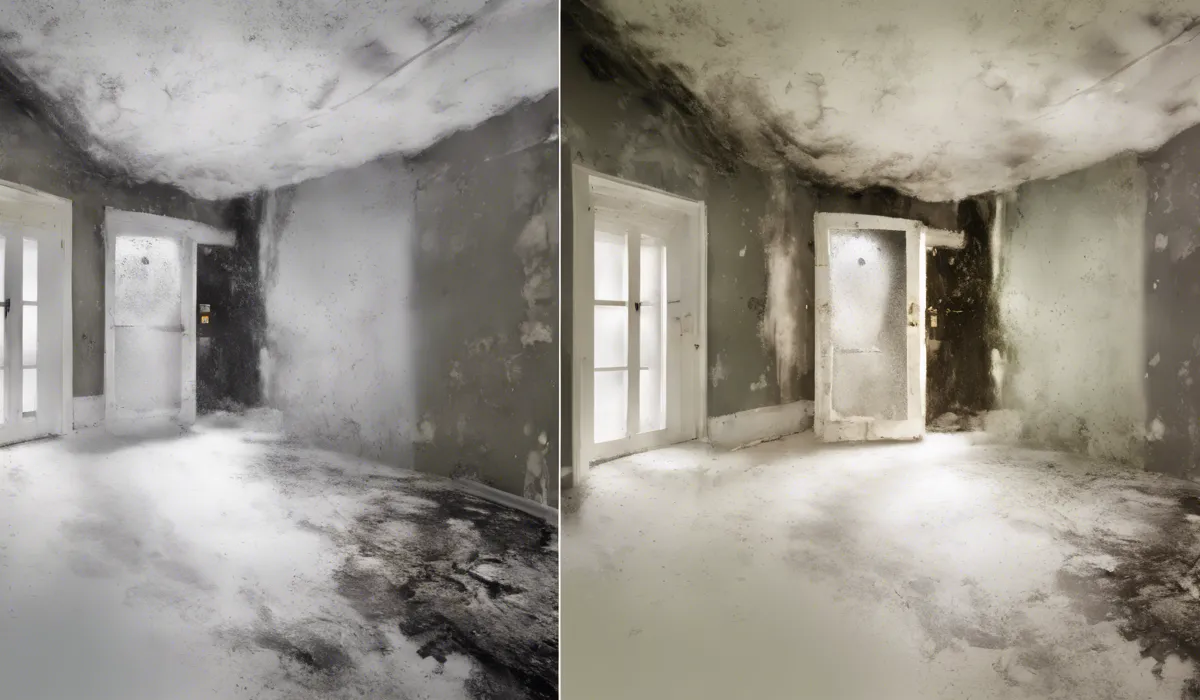Yes, CLR (Calcium, Lime & Rust Remover) can kill mold. It is formulated to target various types of household molds. Apply CLR to the moldy area, let it sit for a few minutes, scrub, and then rinse thoroughly. Always follow the safety instructions on the label.
Understanding CLR and Its Ingredients

What is CLR?
CLR, which stands for Calcium, Lime, and Rust Remover, is a popular cleaning solution widely utilized in households and industries to tackle stubborn stains and build-ups caused by minerals and rust.
This powerful cleaner is designed to work efficiently on a variety of surfaces without causing damage when used as directed. Its effectiveness lies in its specialized formula that targets deposits that ordinary cleaners might not be able to handle.
Key Ingredients of CLR
The composition of CLR is a thoughtfully crafted blend of ingredients, each serving a specific purpose in the cleaning process.
The primary active ingredients include various acids that are effective at dissolving mineral deposits, such as calcium, lime, and rust.
These acids safely break down the unwanted buildup, allowing for easy removal. Additionally, CLR contains surfactants that help in spreading the formula evenly across surfaces and penetrating stains for thorough cleaning.
Roles of CLR Ingredients
Each ingredient in CLR plays a vital role in the cleaning process. The acids, for instance, react chemically with calcium, lime, and rust to soften and dissolve them.
Surfactants lower the surface tension, making it easier for the liquid to spread and penetrate grime and mold.
Other components work to stabilize the formula, ensuring it remains effective over time and under various conditions.
General Use of CLR for Cleaning
CLR is generally used to clean hard-to-remove deposits on a variety of surfaces including bathroom fixtures, kitchen appliances, and plumbing.
It’s important to follow the specific directions for the type of surface being cleaned, which typically involve applying CLR to the affected area, waiting a specified amount of time, scrubbing if necessary, and then thoroughly rinsing away the solution.
CLR’s versatility makes it a go-to option for persistent cleaning challenges.
The Effectiveness of CLR Against Mold

Properties of CLR That Combat Mold
CLR is formulated to target not just mineral deposits but also household molds. Its acidic properties are effective in breaking down the structure of mold, allowing for its removal from surfaces.
Mold colonies thrive in moist environments, and CLR’s formula helps to disrupt this habitat, making it a hostile place for mold to grow.
The cleaning action of CLR not only removes visible mold but also helps to clean the microscopic spores that can lead to future mold growth.
Supporting Evidence of CLR’s Effectiveness
While there might not be extensive studies published regarding CLR’s specific effectiveness against mold, its active ingredients have been proven to combat mold in various scientific settings.
The acids in CLR’s formulation are known for their antimicrobial properties, which are effective in inhibiting mold growth.
The effectiveness is also supported by numerous user testimonials and reviews, confirming its ability to treat and prevent mold infestations in homes.
Comparison With Other Mold-Killing Solutions
Compared to other mold-killing solutions, CLR stands out because it does not just target mold; it also addresses the underlying mineral deposits that can harbor mold growth.
Bleach, for example, is another common mold treatment, but it may not be as effective at removing the mineral buildup.
Furthermore, CLR is designed to be safe for use on a wide range of surfaces, making it a versatile and convenient choice for comprehensive household cleaning.
Safety and Best Practices for Using CLR to Kill Mold

Precautions When Using CLR
When using CLR, safety should always be a priority. It is important to wear protective gloves and ensure good ventilation in the area to avoid inhaling fumes.
Avoid contact with skin and eyes, and keep CLR away from children and pets.
It’s also crucial to test the solution on a small, inconspicuous area first to ensure it does not damage the surface being cleaned.
Step-by-Step Application of CLR on Mold
To effectively use CLR on mold, start by applying the solution directly to the moldy area. Allow it to sit for a few minutes, giving it time to penetrate and break down the mold.
Next, scrub the area with a brush or sponge to help lift the mold from the surface. After scrubbing, rinse the area thoroughly with water to remove any remaining CLR and mold residue.
It’s important to follow the instructions on the CLR label for the best results.
Tips for Preventing Future Mold Growth
Preventing mold growth is key to maintaining a clean and healthy home. To do this, control humidity levels by using dehumidifiers or fans, especially in areas like bathrooms and kitchens where moisture is common.
Fix leaks promptly to avoid water accumulation, and ensure good air circulation throughout the home.
Regular cleaning with CLR can also help prevent the conditions that allow mold to flourish by keeping surfaces clean and free of organic material that mold feeds on.
FAQs About CLR’s Effectiveness on Mold
Can CLR be used to kill mold?
Yes, CLR can be used to kill various types of household mold.
How do you use CLR to remove mold?
Apply CLR to the moldy area, let it sit for a few minutes, scrub with a brush or sponge, and then rinse the area thoroughly.
Is CLR safe to use on all surfaces for mold removal?
CLR should be used according to the safety instructions on the label, as it may not be suitable for all surfaces. Always test on a small, inconspicuous area first.
How long should CLR sit on mold before scrubbing?
Let CLR sit on the moldy area for a few minutes before scrubbing.
Are there any safety precautions to take when using CLR for mold removal?
Yes, always follow the safety instructions provided on the CLR label, such as wearing gloves and ensuring good ventilation during use.
Final Thoughts
CLR is effective in eliminating household molds, including calcium, lime, and rust deposits.
To address mold issues, apply CLR to the affected area, wait briefly, scrub the spot, and rinse it off. For safe and effective use, adherence to the product’s label instructions is imperative.
